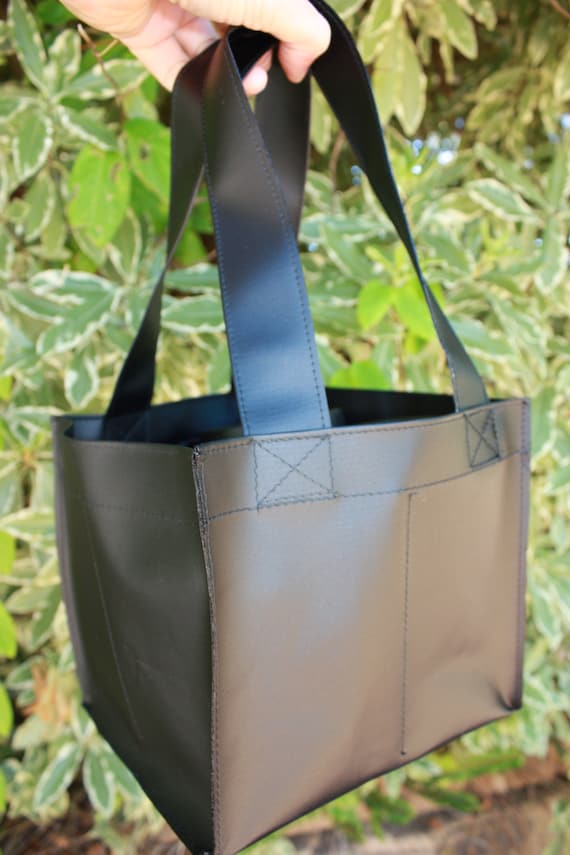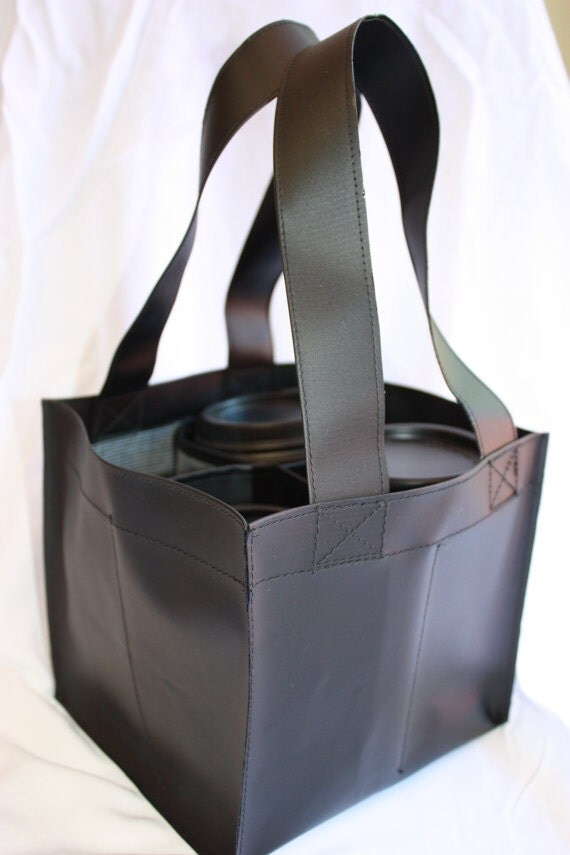I've been thinking a lot lately about why we spend so much on crafty ventures. Being creative is such an important part of the human experience. It's a way to de-stress, express ourselves, spend time with our friends or family, and make things for the people we love. But spending guilt can take something away from that experience and dampen the creative passions.
I love all the gorgeous options available these days for fabric and yarns and I love to have a little splurge now and then. But we don't always have the money to spend and sometimes I think it's great to remember all the resources available to us that are free or cost very little. Just recently I was checking out a way to
make your own vinyl fabric out of plastic bags which is great to use in patterns that call for oilcloth. But there are so many other great ways to get the resources you need to sew:
1.Dumpster diving - No, please don't go rummaging through stinky stuff! What I'm suggesting is you check out the dumpsters and skips behind businesses and large buildings that will contain things for a hardwarey rather than stinky nature. There's all sorts of stuff to be had - interesting parts of building materials, off-cuts of wood, plastic and metal that can be used to make things that complement your sewing, like a bag handle for example. For making items like a
coffee carrier or messenger bag you can find items like discarded vinyl banners outside of printing shops and jute and woven bags and sacks outside feed stores and cafes that roast their own beans. But before you go out picking through other people's off-casts, check out the laws in your country
here. If in any doubt go to the places you are interested in and ask if they are willing to let go of discarded items.
2. Two dollar shops as they're called here in Australia - dollar stores and pound stores in the US and the UK. Think laterally. Have a look at the items in these stores for the fabric they are made of. If you need towelling for the back of a
bib or burp cloth, rather than go to a fabric store and buy a whole bunch of it, just grab an inexpensive hand towel for two dollars. If you are considering creating your own fabric designs by painting fabric remember to check the arts and crafts aisle for fabric paints at a fraction of the cost of an art store. If you need buckles or clips for a bag have a look at a cheap bag that has all the clips you need rather than buy the clips at a higher price from a haberdasher.
3. Thrift stores - These are a great place for all sorts of treasures. The trick is to look at something through how-can-I-transform-this goggles. Items like belts can be upcycled into handles for a bag. Buckles can be used to embellish the front of a bag and interesting vintage items like doilies or embroidered work can be used as embellishments for items like a child's dress or doll. One of my favourite finds was a stash of unused vintage tea towels in a variety of designs from different parts of the country. Someone had stored up their travel souvenirs as a momento and kept them in pristine condition for years and the combination of all the colours together created the perfect vintage palette. Vintage tea towels and other vintage linen items like tablecloths and napkins can be transformed into gorgeous one-of-a-kind homewares like cushions, ottoman stools, and even placed inside a frame for display. Don't forget clothing - the obvious source. Even if there's no way you can wear the item, if it's in a fabric you love you can just snip it close to the seams to get as much fabric out of it as you can for another project. Items like old sweaters can be cut into squares or strips and sewn together to form a "quilted" blanket. Old tshirts can be cut in the same way and pieced together to make a scarf or pillow.
4. Make your own fabric using screen printing. Check out this
great tutorial from Instructables to find out how to make your own screen printer. Be adventurous with your fabric choices too. Screen printed designs look great on fabrics like jute to make a wall hanging or grocery tote, or you can print a design over an existing design to create an interesting juxtaposition.
5. Hard rubbish day. Whilst we normally think of finding things like vintage furniture on the street, don't forget to think laterally again. An old sofa may in too poor a condition to be of service any more, but what is it covered in? Does it have a fabulous fabric that can be saved? Same goes for other items like lampshades or clothes. Just remember - consider whether it has recently rained while the item would have been on the street and always launder these items well before use.
Once you change your thinking about sourcing fabric you will find yourself becoming curious about new finds, and the challenge of the hunt will replace those nagging worries about the most recent fabric store splurge!




